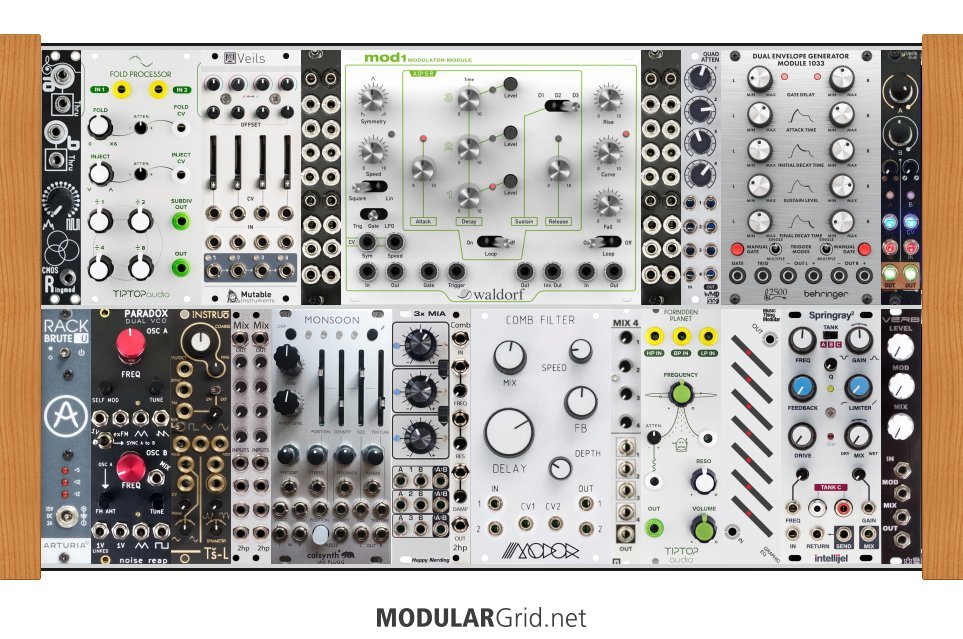to start with please read through the recent thread 'this should not exist' for all the reasons not to buy either b-company or synthrotek products - only you and your conscience can decide... but note that at least some stores have stopped stocking synthrotek due to the fact that they are poor quality and do not have adequate product support not just because of Steve's online rape jokes...
the waldorf mod-1 modular is best described as huge and oversized for a rack this size (or any to be honest) Maths would be a better replacement - a bit smaller and if you search a bit online you will find the 'maths illustrated manual' - which is an excellent learning tool resource for modular synthesis in general; even if you do not buy the module - but it might make you buy it!!!
too many 2hp modules - they are horrible from an ergonomics point of view - especially when next to each other or between other modules that are densely populated!
most modular synthesists do not use eq - filters are more prevelant and do similar things - but with added benefits - resonance and possibly self-oscillation for example
other than that - m'eh, but each to their own in a way - I'd start slowly:
a sound source, a sound modulator, a modulation source, a way to listen and a way to play and add a few utility modules: I like links, kinks, shades, veils and a matrix mixer as a starter kit (kinks is discontinued - wmd/ssf toolbox is a good substitute) and you have veils and a 3*mia (which is a good substitute for shades) and then play with that for a while to get your head round what you are actually doing and what modules you actually need (as opposed to thinking you want now) and add to the rack slowly
I hope all this helps!!!
"some of the best base-level info to remember can be found in Jim's sigfile" @Lugia
Utility modules are the dull polish that makes the shiny modules actually shine!!!
sound sources < sound modifiers < modulation sources < utilities


